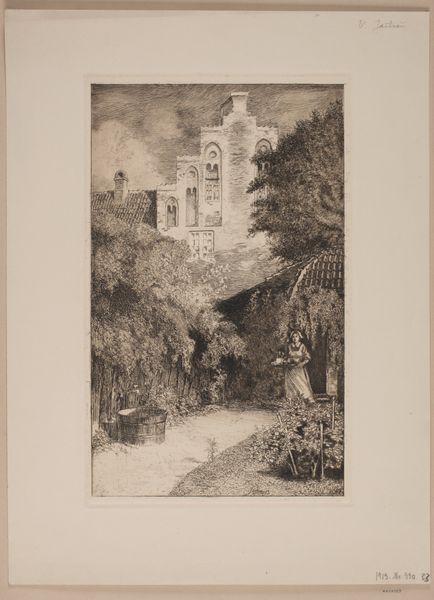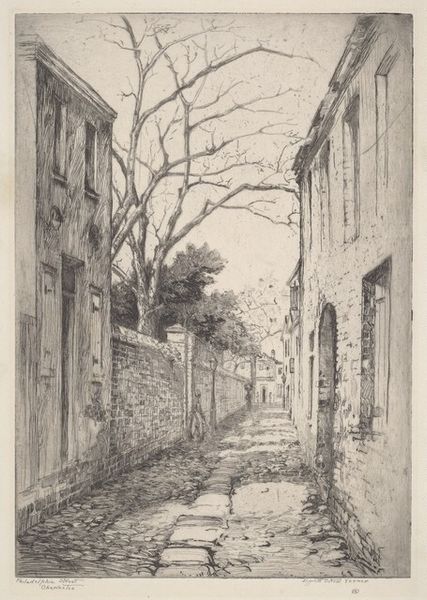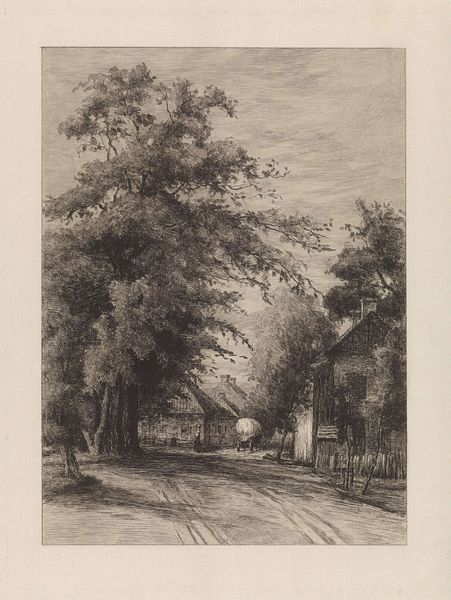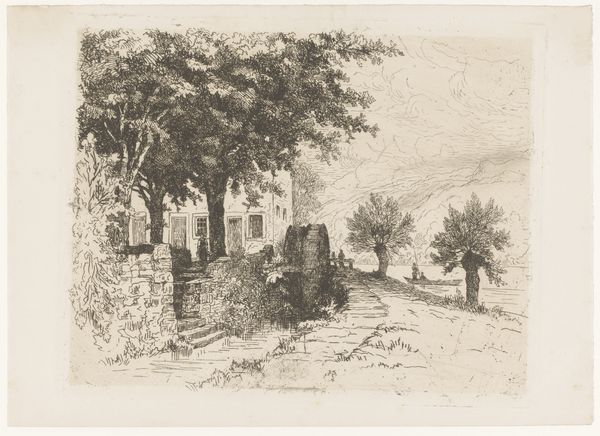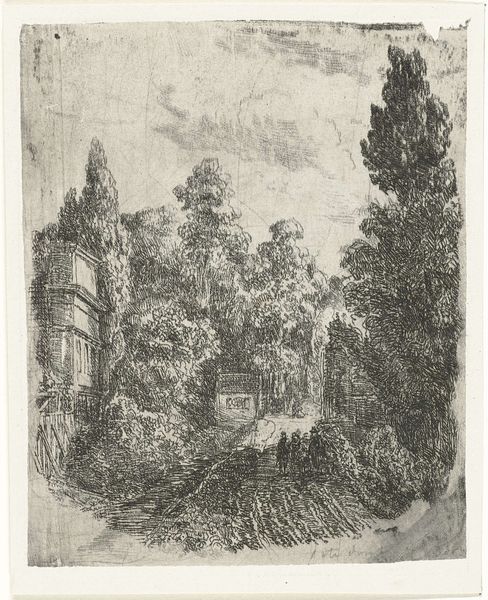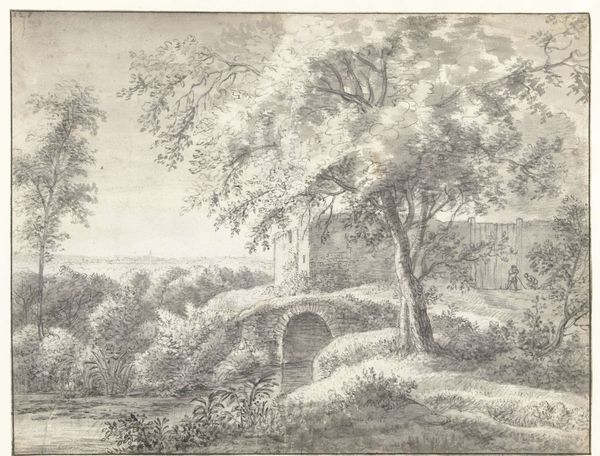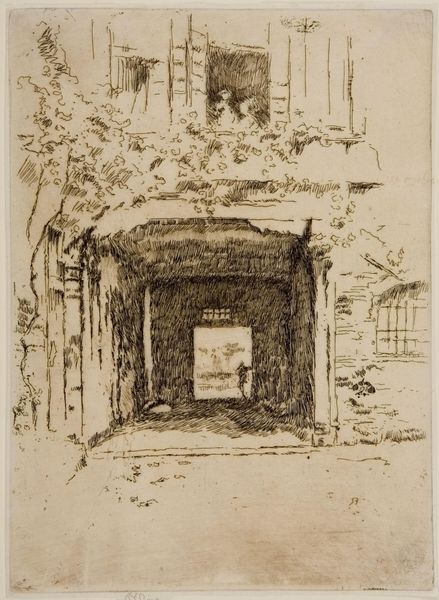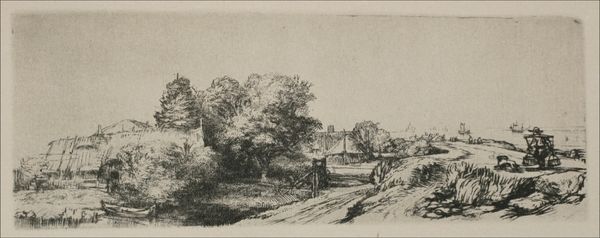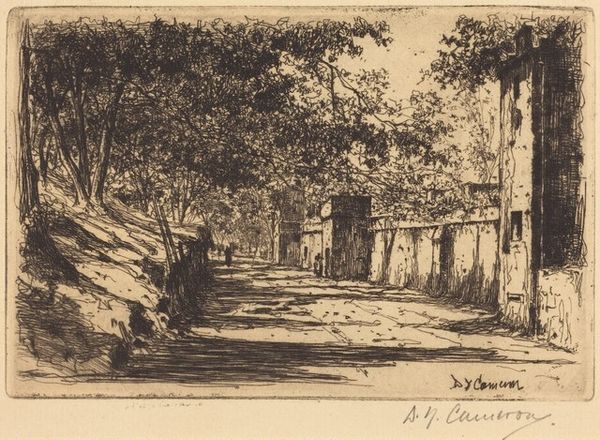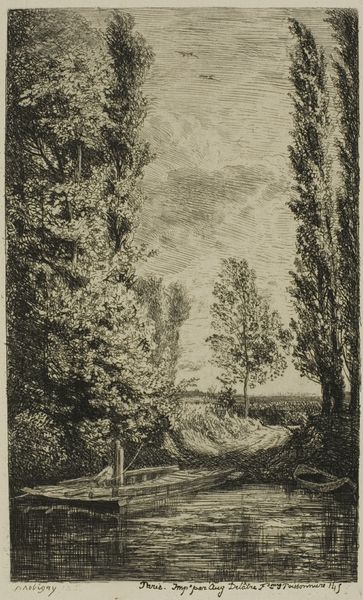
drawing, print, etching
#
drawing
# print
#
etching
#
landscape
#
etching
#
pencil drawing
#
academic-art
Copyright: Public Domain: Artvee
Curator: Oh, my, what a gorgeously simple scene! This etching by Isidore Pils really just pulls you right down that sun-drenched path. I can almost feel the Roman heat shimmering. Editor: Pils, yes, a key figure in 19th-century French art, deeply involved with the Académie. This is, after all, titled "Entrée de la Villa Medicis, Académie Française de Peinture à Rome"—or, Entrance to the Villa Medici. He would certainly be concerned with portraying an appropriately stately entrance to this art institution. Curator: Stately for sure, but isn’t there something almost… overgrown about it? That scraggly foliage on either side, the casual slope of the walls—it feels less like a grand entrance and more like a secret garden path, you know? I get this quiet, secretive vibe. Editor: Well, Pils' career oscillated quite a bit, and the image seems deliberately romanticized. He did spend a considerable amount of time at the Villa Medici as a Prix de Rome laureate, so the scene undoubtedly held a special significance for him. And that feeling is very deliberately presented; academic art often aimed for such sentimental responses. Curator: Sentimental for sure. It makes you want to wander into the drawing itself. The artist plays with light and shadow; it makes the details crisp, and that contrasts beautifully with the hazy, almost dreamy quality of the foliage. Almost as though memories are tangled in with the plants themselves. What do you see as particularly historically poignant about this etching? Editor: It captures a very specific moment in the institutional history of art training. The Villa Medici was the Roman home of the French Academy, and winning the Prix de Rome was a career-defining honor. Images like this cemented its reputation but also helped construct a certain kind of artistic identity, very rooted in classical tradition and landscape. Also, the medium, etching, suggests this romantic vision of an earlier, more refined history of art. Curator: That academic tradition shines through! Looking at the soft lines, the sense of almost hushed reverence…it makes me wonder what it must have felt like to walk that path as a young artist, steeped in history. Like entering a dream and, as such, such a powerful place to then build on traditions, both adhering to and perhaps later breaking away. I'm off to find my own artistic "path". Thank you. Editor: Absolutely. Pils offers us an insight into not just a place, but also a set of values and aspirations. An etching can also often feel timeless; so does his memory. Thank you.
Comments
No comments
Be the first to comment and join the conversation on the ultimate creative platform.
